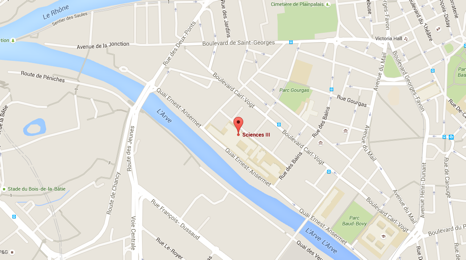événements et news
PharmVar GeneFocus: NAT2-Genetic Variation and Updated Nomenclature.
The Pharmacogene Variation Consortium (PharmVar) provides nomenclature for the highly polymorphic human N-acetyltransferase 2 (NAT2) gene. NAT2 metabolizes several clinically used drugs including isoniazid, hydralazine, amifampridine, procainamide, and sulfonamides such as dapsone, and also some highly carcinogenic arylamines. Systematic nomenclature describing NAT2 variation is essential for pharmacogenetic testing, genotype interpretation, and translation to phenotype in research and clinical settings. This GeneFocus provides an overview of NAT2 variation and describes important changes to its star allele-based nomenclature that were made as it was transitioned to PharmVar in March 2024. We also highlight and discuss challenges regarding the characterization of allelic variation and determination of allele frequencies across world populations. The "new" NAT2 PharmVar nomenclature is utilized by ClinPGx (formerly PharmGKB) and the Clinical Pharmacogenetics Implementation Consortium (CPIC).
Au Néolithique, l’agriculture s’est imposée en douceur
Une étude de l’UNIGE montre que les chasseurs-cueilleurs d’Europe et les agriculteurs venus d’Anatolie se sont mélangés progressivement pendant le Néolithique.
Understanding Architecture And Evolutionary Patterns In Haplolepidous Peristomes (Dicranidae, Bryophyta) Using Histology And Micro-Morphology
25.07.2023 14:00, Salle de conférence (Museum of Natural History)
Mathilde Ruche (Michelle Price's group).
organisé par: Michelle Price.
Recherche
Notre département regroupe 12 laboratoires de recherche employant un total de presque 200 scientifiques, ingénieurs et techniciens. Les sujets de recherche de ces laboratoires vont de la génétique du développement à la régénération en passant par l'evo-devo, la biologie physique, phylogénétique, la systématique et l'anthropologie.
plusévénements
-
25 Jul
Understanding Architecture And Evolutionary Patterns In Haplolepidous Peristomes (Dicranidae, Bryophyta) Using Histology And Micro-Morphology
-
30 Aug
to be announced
-
29 Sep
Mechanobiology of cell shape control
contact
Département de Génétique et Evolution
Quai Ernest-Ansermet, 30
1205 Genève
Suisse
bureau: 4002A
T: +41 22 379 67 85
 plus
plus
